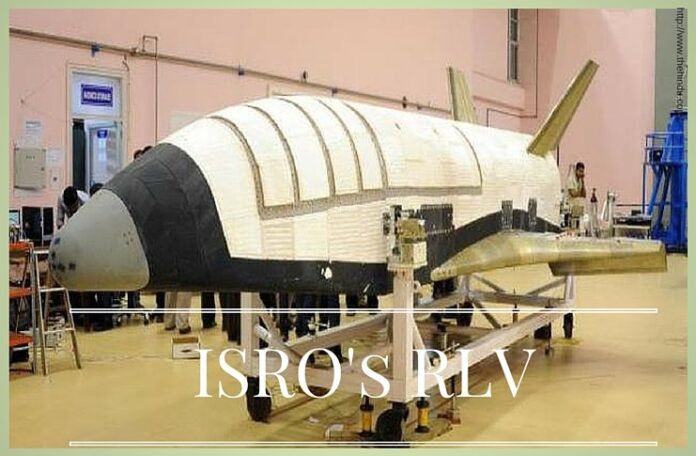
[dropcap color=”#008040″ boxed=”yes” boxed_radius=”8px” class=”” id=””]E[/dropcap]ncouraged and enthused by the success of the “test flight” of the Reusable Launch Vehicle-Technology Demonstrator (RLV-TD) held at Satish Dhavan Space Centre, Sreeharikotta on May 23, 2016, scientists and engineers of Indian Space Research Organisation have decided to go ahead with the next mission sooner than that was decided earlier. The RLV technology has become a game changer of the country’s space research as the team which developed the vehicle ‘hit the bull’s eye’ with the first test flight itself, according to Shyam Mohan, project director, Team RLV.
Shyam Mohan, an aero- space specialist, told PGurus that the RLV-TD worked as per the “story board” scripted by the team members. “The next stage in the development of the reusable vehicle was to conduct another test and make the vehicle land on a pre-determined spot like a specially developed runway akin to an airport. We may need a runway of 3.5 length and were planning to construct one at Satish Dhavan Space Centre at Sriharikotta itself. But chances are that we may go ahead with the second test fight of the RLV and use one of the existing runways in the country,” said Shyam Mohan, who has a masters in engineering (IIT Madras) and Ph D from IIT Bombay.
What made ISRO to speed up the second ‘test flight’ of the RLV was the performance of the RLV-TD flown on May 23 which worked as per the “script”prepared by Shyam Mohan and team. “This is a rare feat. The mission which lasted for 200 seconds was a flawless operation as per the analysis held by us during the last couple of weeks,” said Shyam Mohan.
The winged rocket (that’s how Shyam Mohan describes RLV) had a length of 6.5 meters and had a wingspan of 3.6 meters. It weighed 1665 kg. “An HS-9 booster rocket powered by solid propellant was used to take the RLV to a pre-determined height. The RLV-TD was integrated to the booster rocket and the taking off looked like the vertical take- off of an aircraft . The booster rocket fired for almost 92 seconds and it took the RLV to a height of 30.2 km. Once the booster rocket completed the burning at the end of the 92 seconds, the RLV blasted off from that point at a speed which was more than 5 Mach (more than five times the speed of sound, in a lay man’s language),” explained Shyam Mohan and R Purushothaman Nair, one of his colleagues.
[dropcap color=”#008040″ boxed=”yes” boxed_radius=”8px” class=”” id=””]T[/dropcap]he RLV flew for 90 seconds at a speed of 5 Mach and when it reached a height of 65.39 km, the speed was decelerated as per the command given from the control room and it started its downward journey, described by Shyam Mohan as the most crucial phase of the mission. “We brought down the speed of the RLV from Mach 5 to that of an ordinary aircraft. When it entered the earth’s surface, the speed was a mere 121.4 meter per second,.” Said Shyam Mohan.
The RLV entered the earth’s orbit as per the instructions and guidance issued by the control cum guidance system of Team RLV-TD. “It landed at a spot 420 km east of Bay of Bengal and the landing was similar to that of an ordinary aircraft. This encouraged us and we are going ahead with the second mission and you will be able to see the next RLV landing on one of the runways in the country. All we need is a 2.5 km long runway,” said Shyam Mohan.
The May 23 experiment was the culmination of 11 years of perseverance and industrious work by Shyam Mohan and colleagues. “It all started in 2004 with the then space commission chairman G Madhavan Nair giving the go ahead for the RLV project. We could convince him that the satellite launch expenses could be brought down to unbelievable rates. Presently, 90 per cent of each launch is to develop the launch vehicle which burns up at the end of each launch. The fuel and other components cost hardly 10 per cent of the launch. Once the RLV becomes fully operational, we can bring down the launch bill and more and more countries will approach us for launching the spacecraft developed by them,” said Shyam Mohan.
Madhavan Nair said the RLV would have become fully operational by this time had the ISRO went ahead with mission with urgency. “But there was a lull after 2009 and many projects were put into the back burner by my successor. If one checks the number of space missions undertook by ISRO during this period you can understand it. We still lag behind by almost six years. But Shyam and his team has done a wonderful job,” said Nair.








very good encouraging/motivating news. congrats to isro.
“But there was a lull after 2009 and many projects were put into the back burner by my successor” – Hope the crooks running UPA by remote control are not the reasons for this.I heard similar lull in developing thorium reactor.I hope this project gets a thump and some of the best brains in this country gets engaged for greater good.